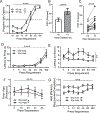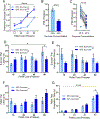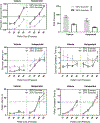Dissociating the effects of dopamine D2 receptors on effort-based versus value-based decision making using a novel behavioral approach
- PMID: 32175760
- PMCID: PMC7802819
- DOI: 10.1037/bne0000361
Dissociating the effects of dopamine D2 receptors on effort-based versus value-based decision making using a novel behavioral approach
Abstract
Cost-benefit decision making is essential for organisms to adapt to their ever-changing environment. Most studies of cost-benefit decision making involve choice conditions in which effort and value are varied simultaneously. This prevents identification of the aspects of cost-benefit decision making that are affected by experimental manipulations. We developed operant assays to isolate the individual impacts of effort and value manipulations on cost-benefit decision making. In the concurrent effort choice (CEC) task, mice choose between exerting two distinct types of effort: the number of responses and the duration of a response, to earn the same reward. By parametrically varying response cost, psychometric functions are obtained that reflect how the two types of effort scale against one another. Direct manipulations of effort shift the functions. Because reward value is held constant in this task, differences in scaling of the two response types must be related to the effort manipulations. In the concurrent value choice (CVC) task, mice make the same type of response to earn rewards of different value (e.g., pellets vs. sucrose solutions). Here the effort required to earn one reward type is parametrically varied to obtain the psychometric function that scales the value of the two rewards into the number of responses subjects will pay to earn one reward over the other. Direct value manipulations shift these functions. We tested the effect of the dopamine D2 receptor antagonist, haloperidol, on performance in the CEC and CVC assays and found that D2R signaling is important for effort-based, but not value-based decision making. (PsycINFO Database Record (c) 2020 APA, all rights reserved).
Conflict of interest statement
The authors have no competing interests to declare.
Figures








